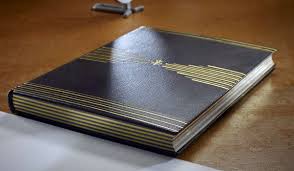
Adhesives matter in strong bookbinding.
In the world of publishing, crafting a book that lasts goes far beyond selecting the right paper or cover. One crucial but often overlooked component is the adhesive. Simply put, adhesives matter in strong bookbinding because they hold everything together—literally. Whether you’re producing textbooks, novels, or catalogs, using the right adhesive ensures durability, flexibility, and long-term usability.

The Backbone of Every Bound Book
When readers open a book, they rarely think about what keeps the pages intact. But behind every well-bound book lies a carefully chosen adhesive. It serves as the backbone, binding the spine and securing every single page. Without a reliable adhesive, even the most beautifully printed book would fall apart after a few uses.
A strong adhesive ensures the book opens smoothly, pages remain secure, and the spine holds its shape. It affects not only the structural integrity of the book but also its usability and reading experience. This is why professionals agree that adhesives matter in strong bookbinding more than most people realize.
Different Adhesives for Different Needs
Not all adhesives are created equal. Depending on the type of book, printing method, and expected use, bookbinders choose from several adhesive types—each offering unique benefits. Common types include hot melt, PUR (polyurethane reactive), and PVA (polyvinyl acetate). Each of these serves different purposes based on strength, drying time, flexibility, and resistance to wear.
For instance, PUR adhesives are ideal for heavy-use books like manuals or catalogs due to their superior strength and flexibility. On the other hand, PVA is often used in hardcover books for its ease of application and strong binding power. Choosing the right adhesive isn’t just a technical decision—it’s one that determines the lifespan and performance of the final product.
Enhancing Durability and Longevity
One of the main reasons adhesives matter in strong bookbinding is their role in durability. A weak or poorly chosen adhesive can lead to loose pages, cracked spines, or books that fall apart over time. On the contrary, a strong adhesive bond extends a book’s life and maintains its structural integrity even under frequent handling.
This is particularly important for books that face constant use—think school textbooks, workbooks, or reference guides. When durability is essential, the adhesive choice can make or break the entire project. That’s why publishers and printers invest time in selecting adhesives that offer both strength and flexibility.
Supporting Various Binding Styles
Adhesives also enable the creation of different binding styles. Whether it’s perfect binding, case binding, or lay-flat binding, each method relies on a specific adhesive type and application technique. Perfect binding, for example, uses adhesives to attach pages to a spine without sewing, offering a clean, modern look. Meanwhile, case binding uses adhesives to attach the book block to a hardcover case, providing both strength and elegance.
Because adhesives matter in strong bookbinding, they must perform well across various styles. A high-quality adhesive enhances not just the functionality but also the aesthetic appeal of a book. It allows for smoother finishes, tighter spines, and a polished overall product.
Environmental and Production Considerations
In today’s printing industry, eco-friendliness is more important than ever. Modern adhesives are being developed to meet environmental standards while still delivering high performance. Water-based and solvent-free adhesives reduce harmful emissions and are safer for both workers and the environment.
In addition, the adhesive chosen affects production speed and efficiency. Fast-drying adhesives allow for quicker turnaround times, while those with longer open times provide more flexibility during the binding process. Balancing environmental impact with production needs is one more reason why choosing the right adhesive is critical.
A Critical Element in Book Quality
Ultimately, a book’s perceived quality is influenced by how well it holds up over time. Adhesives ensure pages stay in place, spines remain intact, and covers don’t peel or warp. They provide the invisible yet essential strength that keeps a book whole from the first page to the last.
In conclusion, adhesives matter in strong bookbinding because they directly impact durability, usability, and overall quality. Whether you’re a publisher, printer, or designer, choosing the right adhesive is an investment in a product that will stand the test of time.





